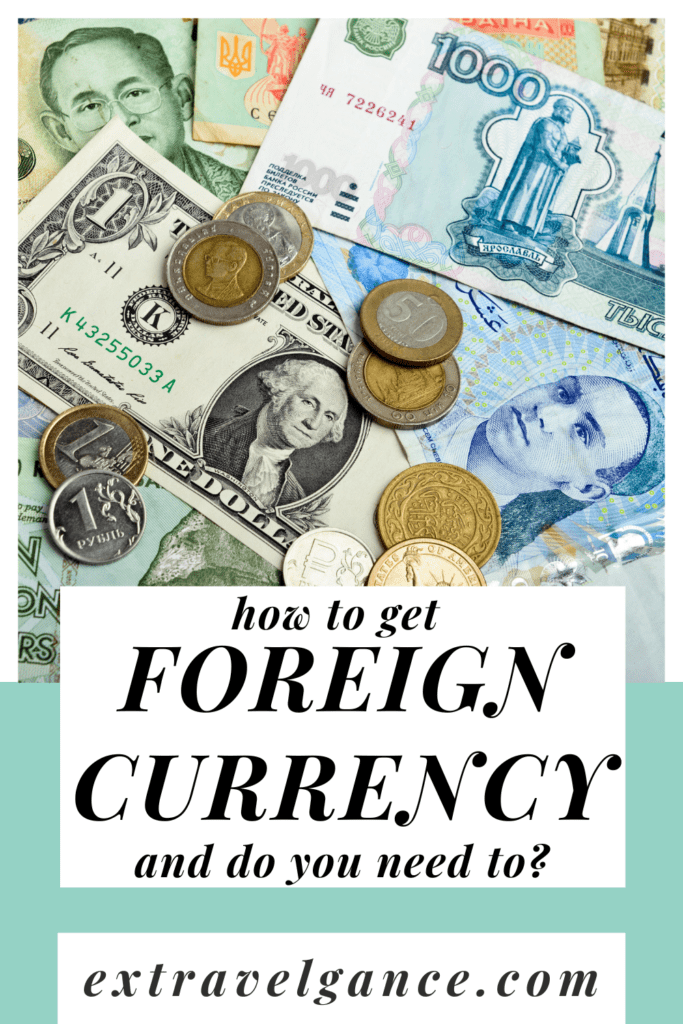
I’ll never forget my first trip trip to India. It was 2006 and I was traveling with 40 students. We could not pay for several expenses in advance. At this time, credit cards were a novelty in India and ATMs were scarce. I also was not able to get foreign currency from my bank. So the university gave me an advance of the money we needed to pay for things during the trip, and I converted the cash into traveler’s checks.
One day I had to go to two different banks in Mumbai to cash $8,000 in traveler’s checks into 355,000 Rupees. The banks gave me all of this money in the equivalent of $50 and $100 bills. The money filled up a backpack that I carried for the next several days. It was terrifying!

It’s so much easier to travel these days! Getting foreign currency is simple, both before and during travel. And sometimes you don’t even need actual money at all! Almost every place you travel to widely accepts credit cards now.
Still, this is a question that comes up often. And no wonder – who wants to be caught somewhere without the ability to pay for what you need? So here are all of things you need to know about getting foreign currency and other money matters abroad.
Note: If you apply for a credit card on any of the links provided in this article, I may receive a referral bonus.
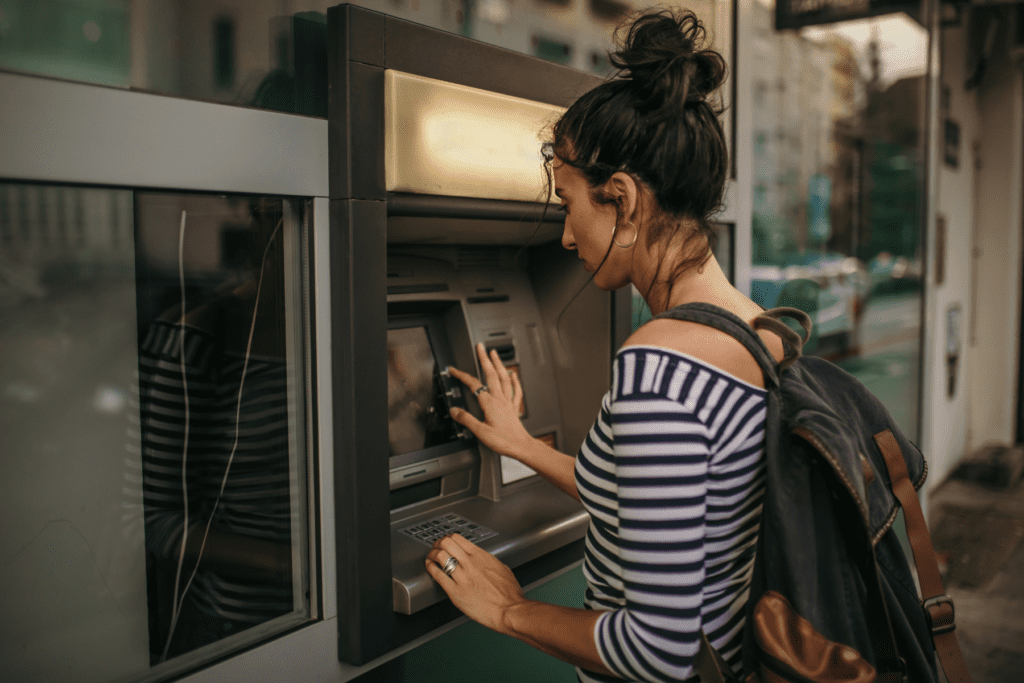
Plan to Get Cash from an ATM Abroad
The easiest and best way to get foreign currency is to withdraw it from an ATM in the country you are visiting. Yes, you will likely pay a fee to use an ATM not affiliated with your bank. But the exchange rate you will get through an ATM is far better than you will get from exchanging US dollars into the local currency at the airport or ordering foreign currency from your bank.
ATM Location
It’s optimal to use an ATM at a bank near your hotel rather than the airport. Typically the exchange rate will be better. However, I don’t like leaving the airport without cash. So I usually just use the ATMs at the airport. The unfavorable exchange rate is a small price to pay for peace of mind!
Credit vs. Debit Withdrawals
You will need some sort of debit or credit card to withdraw funds from an ATM. Unless you absolutely have to, don’t use a credit card. A credit card treats an ATM withdrawal as a cash advance and charges high interest rates for it. Instead, use the debit card affiliated with your bank account.
Make sure you have notified your bank that you are traveling. Also, be cognizant of your bank’s daily limit for ATM withdrawals. Most banks have a cap on how much money you can withdraw each day – typically $300-1,000. Remember that this day is measured using the time zone of your home country. To get around this, you can request your bank lift the cap during your trip (or forever if you are a frequent traveler).
I also like to travel with two debit cards tied to two different bank accounts, just in case one doesn’t work. This has happened to me numerous times over the years! I have a separate bank account that is connected to my main bank account, and I only use it for travel. It’s a nice place to set money aside for trips I want to take, and allows me the luxury of having two debit cards for travel – one for each bank account.
Figure Out the Exchange Rate in Advance
Another tip is to figure out exactly how much money you will need before using the ATM. Remember, you are withdrawing funds in the foreign currency, not in USD. When I went to Russia, I had to use an ATM five times in a row to get as much cash as I needed – I kept miscalculating the exchange rate. So I was hit with 5 separate $5 ATM charges. Not my best moment!
Now I figure out how much I need in USD and convert it to the foreign currency before I even leave home. For example, on my recent trip to Bali, I wanted $100 so I had to withdraw 1,500,000 Indonesian Rupiahs. That’s a lot of zeros – it’s no wonder people get confused!
How Much to Withdraw
Do some research in advance on how locals pay for things in the country you are visiting. If credit cards are common, then you probably only need cash for emergencies and places that might not accept cards. I typically will get about $100 in local currency in places like this. If credit cards are not common, you will need more. You want to get as much as you are comfortable carrying at any one time to reduce the number of trips to ATMs and their associated fees.
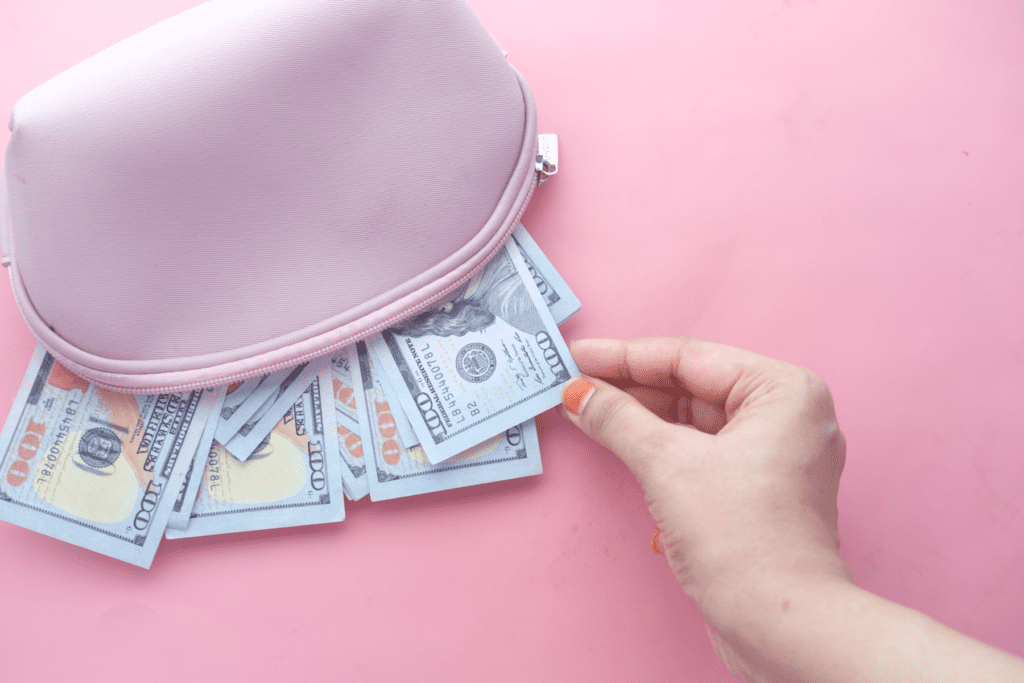
Have Cash as a Backup
I have had a few times where I could not make an ATM work with either of my debit cards, or I could not locate an ATM at all. That’s why I never travel without some cash in USD. If I have some cash, I can always take advantage of one of the numerous currency exchange windows at every airport. You can also usually exchange cash for local currency at your hotel or a bank.
Another reason to have some cash in USD is that it is accepted and even preferred in a lot of countries. The US dollar is a secure currency that is usually stronger than the local currency of most developing countries. Sometimes you can negotiate cheaper prices in markets if you offer to pay in USD. So it’s never a bad idea to have some USD on hand.
How Much to Exchange
If you find yourself needing to exchange cash for foreign currency, don’t exchange much. Just get what you think you will need for the next day or so. Then try to find an ATM to use for a more favorable exchange rate.
How Much Cash to Take
How much cash should you take? I typically take $200 in USD in various dominations. I will go to a bank before my trip and request $80 in 20s, $50 in 10s, $50 in 5s, and $20 in 1s. If you know you are going to a country that accepts USD for many expenses, you may want more. But never take more than you are willing to lose. Pickpocketing is rampant in most big cities, and while armed robbery is uncommon, it happens. What to do in this scenario is good topic for another post on staying safe abroad!

Order Foreign Currency from Your Bank
If you don’t like to leave anything to chance, you usually have the ability to order foreign currency before you leave home. This is not optimal because you will usually have a less favorable exchange rate than withdrawing funds from an ATM, and the fees can be high. But peace of mind is worth spending some extra money on, especially if you aren’t an experienced traveler.
Your bank or credit union will offer the best exchange rates. You can usually order foreign currency online, by phone, or in person at your local branch. Please allow plenty of time. On rare occasions, your bank may have the currency on hand. But usually they will need several days to order it and have it shipped either to the local branch or directly to you.
I typically only get foreign currency in advance from my bank if I’m going to a country where they use the Euro. This is because my bank typically has it on hand and I can just go in and get it. Otherwise, I rely on ATMs in country.
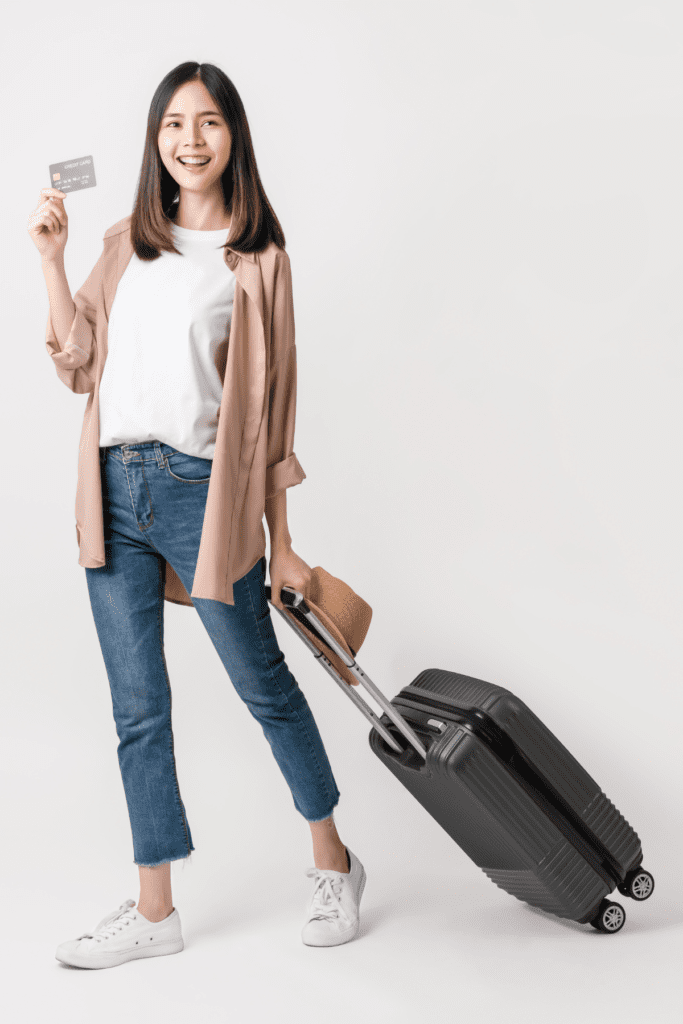
Use Credit Cards as Often as Possible
Fortunately, most of the world accepts credit cards these days! Credit cards will usually give you the best exchange rates. In addition, you are more protected from theft. If your card is lost or stolen, you simply need to report it. You will not be responsible for any charges made on the card after it left your possession.
Avoiding Foreign Transaction Fees
One thing you need to be aware of is foreign transaction fees. Most credit cards have a 1-3% fee if they are used abroad. If you travel often, it’s wise to add a credit card that does not have a foreign transaction fee to your wallet. My favorite foreign transaction fee-free cards are Capital One Venture X and Chase Sapphire Preferred. Keep in mind that both of these cards do have annual fees, so they are not a good choice unless you are going to use their other benefits (read more about this in my Venture X and Chase Ultimate Rewards posts). But if you travel enough to worry about a 1-3% fee, you should probably hold one or both of these cards!
If you don’t have a foreign transaction fee-free card, don’t worry about it too much. Usually the exchange rate you are getting by using a credit card will more than make up for the 1-3% fee you are paying!
Dynamic Currency Conversion Trap
One word of warning – never say yes if you are offered the ability to charge your card in USD instead of the foreign currency. This is called dynamic currency conversation. I know it’s tempting to know exactly what something is costing you. But the truth is that they are giving you a very unfavorable exchange rate with this offer. So you will pay more for whatever you are buying than you would if you tell them to charge your card in the local currency.
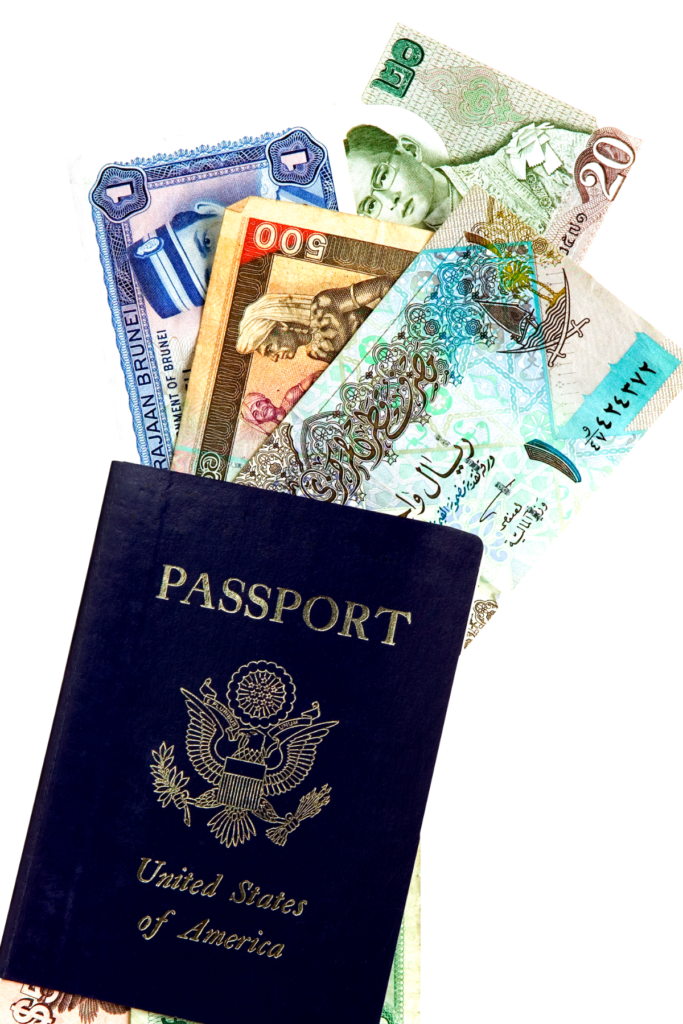
What to Do with Leftover Foreign Currency
It’s inevitable. No matter how much you plan and forecast your cash needs, you will either have too much or too little left at the end of your trip. If you have too little, you often have to make a last minute ATM run and then end up with too much anyway! So what can you do?
Your answer will depend on a lot of factors such as how much is left, your future travel plans, etc. But here are some ideas.
Blow It at the Airport
You can have a meal, get a drink, buy a souvenir, etc. Some of my favorite souvenirs were bought with leftover foreign currency at airports! It feels like funny money at that point as it will soon be valueless (at least to you), so those end up being no-regret purchases!
Exchange It
If you have a lot of money left, you may want to consider going to a currency exchange kiosk at the airport and converting it back to USD. However, don’t be surprised if the value of the USD you get back is far below your expectations. After my trip to Rwanda, I exchanged Rwandan Francs back to USD and the value I received was 50% less than what my exchange calculator app told me to expect. The exchange rate and fees were obviously not in my favor!
Your home bank may be a better option. It will definitely offer better exchange rates and lower fees. However, banks may not accept all foreign currencies. If you think you might do this, you should ask in advance.
Save It for a Future Trip
If you plan to return to a country that accepts the foreign currency, it makes sense to keep it. Just make sure you put it in a safe place where you can find it when you need it! I do this with Mexican Pesos, Euros, and British Pound Sterling. I’m sure to return to Mexico, various places in Europe, and to the United Kingdom, so I’ll make use of those funds eventually.
If you have just a little money left, it makes a fun gift. My kids love their foreign currency collections, and they now have money from all over the world!
Donate It
One great thing you can do with leftover foreign currency is donate it. Most airports will have donation stations for various charities, and it’s not unusual for flight attendants to collect donations on the plane as well. I had way too much Danish Krone left over from my trip to Denmark, and I was able to donate it on my flight to a charity for Ukrainian refuges.
Have you blown leftover foreign currency at the airport?
If so, tell us what you bought below! You can also contact us and follow us on Facebook, Instagram and Pinterest so you never miss a post!



Pingback: 7 Simple Strategies for Staying Safe During Travel - Extravelgance